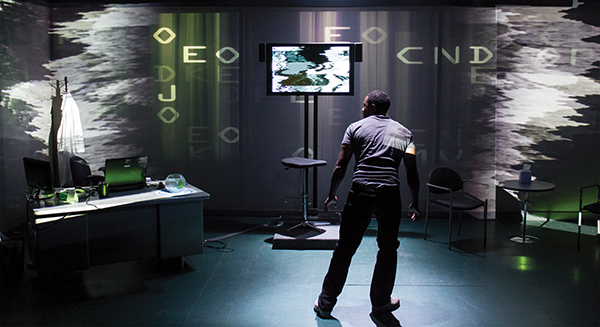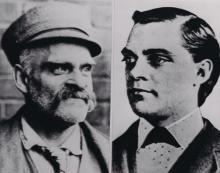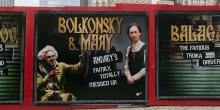
Closer Than They Appear is a multimedia play that tells the story of an encounter between an American soldier and an Iraqi girl in Fallujah in 2003. Scenic design for this new play is a current project of Melpomene Katakalos.
Written by Christine Evans, Closer Than They Appear is a ghost story for the digital war age. Written for multimedia performance, it incorporates projections from Virtual Iraq, an immersive virtual reality program used in veterans’ Post-Traumatic Stress Disorder therapy. It tracks the twin fates of Michael, an African-American veteran, and Zaynab, an Iraqi teenager who is video blogging from Fallujah’s war zone through the lens of the technologies that aid and connect them. Their worlds collide in Michael’s virtual therapy room through the powerful Virtual Iraq animated landscapes. In the end, the war trauma Michael recalls, and Zaynab experiences, demands and receives a reckoning.
This is a revisited script for Katakalos, an assistant professor of theatre. She originally designed it three years ago for the HERE Arts Center in New York City, where, in a workshop setting, artists experienced the technology for the first time.
“That was a great experience in New York, but we’ve always wanted to tour it,” she says. “We wanted to revive it in some way because it’s still very relevant. Three years later, the technology is more advanced. It’s amazing. It’s brought new ideas to the script. Before, it was very narrative. Now it’s much more liminal space, which affects the set.”
The set is designed to convey a sense of disorientation. Edges of the set transition smoothly into the floor to reduce the audience’s perception that they are in a specific space.
“It’s difficult to discern what is real and what is not,” she says. “It’s disorienting to not have a horizon line. If you alter the horizon line, the audience is more willing to accept where they are, which, in this case, is a simultaneous imagined and real space. It’s virtual. The objective is to totally immerse the audience in the experience. It’s interesting to explore virtual reality and bring it to the stage in a way that looks at this sense of what’s on the edge of reality.”
Katakalos worked with media designer Jared Mezzocchi to create images for the scenery. The intent was to create overlapping images that support the narrative and add to the sense of overlapping realities. Doing this allowed Mezzocchi to project images of Zaynabinto Michael’s reality—and vice versa. The video is shot so as to convey to the relationship that develops between the soldier and this young girl.
“It was great. We were sketching on notebook paper and really working together because we’re creating this total environment in tandem,” says Katakalos. “That relationship is crucial because what surfaces I pick, what edges I pick really matter. There was this wonderful back and forth of information, as I created these wonderful surfaces on which he can create these layered images. It’s more interesting to create something that an audience hasn’t experienced that adds to the story.”
































